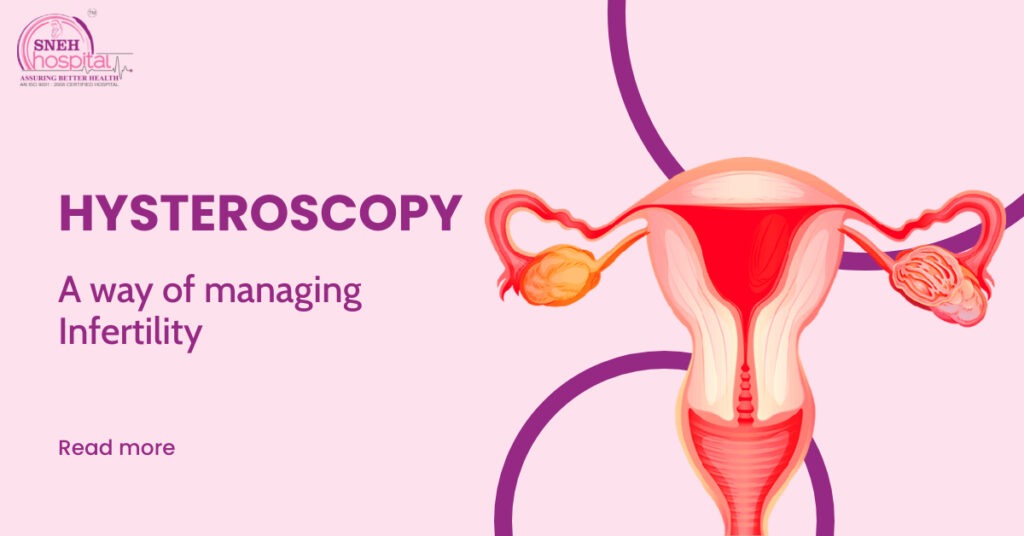“Hysteroscopy is a plan of action to perform the complete examination of women’s reproductive structure. It always come up with the issues concerning infertility or gynecological abnormalities. Hysteroscopy is a golden standard for treating some infertility issues”
Hysteroscopy can be used for diagnostic purpose as well as operative purpose. Diagnostic hysteroscopy uses a hysteroscope (A thin lighted instrument) to monitor the cervix and inside a women’s uterus to evaluate peculiarities such as size, shape and inner lining or factors affecting fertility. Whereas, Operative hysteroscopy makes use of small surgical instruments to correct a detected condition and used to remove uterine fibroids and polyps, correct endometriosis, open blocked fallopian tube.
Diagnostic hysteroscopy:
Diagnostic hysteroscopy helps the physician to check the shape, size and inner lining of a woman’s uterus to find any gynecological peculiarities and also the factors affecting fertility.
Operative hysteroscopy:
Operative hysteroscopy is used to rectify some conditions which as detected in diagnosed hysteroscopy. This type of hysteroscopy is used to correct issues like Removal of Foreign Body, Uterine Polyps, Lysis of Adhesions In C/O Asherman’s Syndrome, adhesions, Cannulation of Fallopian Tube Ostia for Proximal Tubal Block, Uterine Septum, Submucosal leiomyomas, Metroplasty, As A Preventive Measure Before IVF Treatment, endometriosis etc.
How is hysteroscopy performed?
It is an outpatient procedure, it is performed under anesthesia, a physician will enlarge the cervix first to make it enough wide, so that a hysteroscopy can lodge in it. Subsequently, a hysteroscope is slide gently through the cervix and into the uterus. In order to get a clear and clean the traces of blood or mucus, regular saline will be filled in the uterus. A thin lighted instrument will be attached to catch out the abnormalities in the abdominal cavity, to see the endometrium (lining of the uterus), ovaries and fallopian tubes on a video screen.
Sometimes, those abnormalities can be corrected through surgery. At that time, doctor may perform surgery through hysteroscope by using micro tools. Hysteroscopy is typically an outpatient procedure. If a doctor has any concerns, such as a patient’s reaction to anesthesia, an overnight hospital stay may be required.
When do you need hysteroscopy?
- When your pap test report is not normal
- If you still bleeding after menopause
- Uterine fibroids, polyps, or scar on your uterus
- Had one or more miscarriages
- Difficulty in getting pregnant
- IUD has come out of place
- As a part of biopsy
Risks of hysteroscopy:
Complications and risk in hysteroscopy are very rare and infrequent. As per study, 1 in 50 procedures, women experience any issue. The most common problem is perforation of the uterus is a condition resulting from the accidental piercing of the full thickness of the uterine wall. If it fails to heal, then there is risk of bleeding and damage to the organs nearby, which may need another surgery.
There are rare chances of uterine adhesions or infections after hysteroscopy. Because of anesthesia, you may feel dizziness, headache or nausea. Severe problems from hysteroscopy are very rare, but may trouble you because of insertion of fluid or gas during surgery.
However, risks are far if you get your treatment done at well-recognized and certified hospital. At Sneh Hospital, we have successfully performed more than 1000 hysteroscopies and laparoscopies. No matter, how complicated they are.

